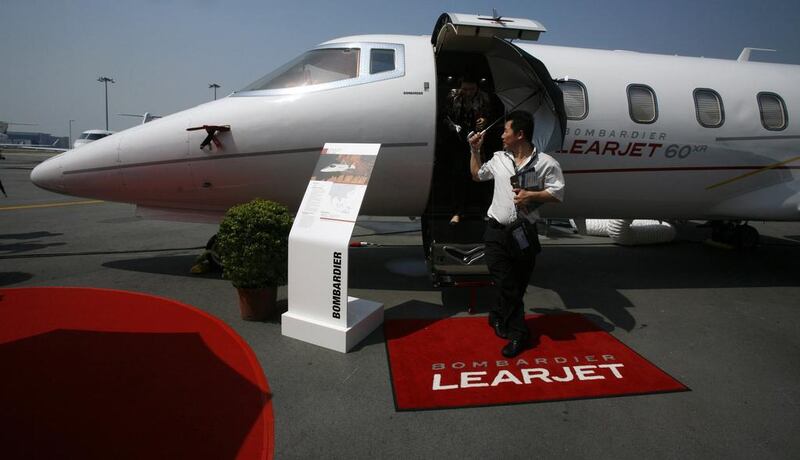The Canadian plane maker Bombardier has reported a lower than expected adjusted net loss and said it expects to finish the year with improved operating margins in all of its businesses.
The company raised the lower end of its full-year forecast for earnings before interest and tax(ebit) to US$350 million from $200m, while maintaining the upper end at $400m.
Montreal-based Bombardier forecast revenue of $16.5 billion for the year, compared with its previous forecast of $16.5bn to -$17.5bn, after the company in September halved the 2016 delivery forecast for its CSeries mid-range aircraft.
The CSeries programme, which has been hit by production delays and cost overruns, has received a $745m investment from the Quebec provincial government.
Canada’s federal government has agreed in principle to invest in the company’s CSeries programme, but a deal is yet to be finalised.
Bombardier said last month it would cut 7,500 jobs, mostly in its train-making division, the second round of layoffs this year, following extended delays and budget overruns in its aerospace business.
Bombardier delivered 36 business jets in the quarter ended September 30, compared with 43 in the same period last year. It delivered 16 commercial aircraft, two more than a year earlier.
The company’s net loss narrowed to $94m, compared with $4.88bn a year earlier. Revenue fell nearly 10 per cent to $3.74bn.
Bombardier booked non-cash charges of about $4.4bn on its CSeries and Learjet 85 programs a year earlier.
The company posted an adjusted loss of $10m, compared with analysts’ average estimate of a loss of $92.8m, according to Reuters.
It broke even on a per share basis. Analysts had expected a loss of 3 cents per share.
Instability
Business-jet deliveries are dropping and will not rebound before 2018, according to a benchmark forecast of corporate aircraft demand over the next decade.
Honeywell International lowered its annual long-term forecast for private jets by 7 per cent, or 600 aircraft, as emerging markets suffer from low commodity prices and the US economy limps along at a slow pace.
Some 8,600 new planes are expected to be delivered from 2016 through 2026, down from 9,200 in last year’s outlook, according to a survey of more than 1,500 business-jet operators worldwide. Sales of those aircraft are estimated at $255bn, down from $270bn in the previous study.
“We have a fair amount of uncertainty and instability in the economy and political environment around the world right now,” said Charles Park, the director of market analysis at Honeywell’s aerospace unit.
The number of used jets for sale that are less than five years old has increased and prices continue to drop, which drags on demand for new aircraft, Mr Park said. The introduction of new models from manufacturers such as Gulfstream and Bombardier in 2018 should stimulate sales, he said.
Deliveries
Worldwide business-jet deliveries will decline to 645 this year and to 625 next year before rebounding back to 645 in 2018, according to a report by Seth Seifman, an analyst with JP Morgan. Deliveries had increased in 2014 to 689 and remained the same last year. They hit an all-time high of 1,136 in 2008.
Flexjet, an operator owned by Directional Aviation, increased its order for Bombardier Challenger 350s to 40 last year. A year earlier, the company agreed to purchase 50 Gulfstream jets manufactured by General Dynamics, including a G650 that will be delivered this year. It also is taking deliveries of Legacy 450s made by Brazilian plane maker Embraer.
In the end, it will take faster economic growth to rev up sales of new business jets. The need for flying privately increases when companies are growing quickly and executives must travel to multiple cities in a hurry, Vick said.
“People are going to be very, very certain that marketplaces are there before they double-down and expand rapidly,” Vick said. “That’s the mode that everybody is in and I think it’s appropriate.”
The rise of private jet-sharing programmes has also crimped sales. The general aviation industry is undergoing a major shakeup as new business models attempt to match idle aircraft with passengers, many of whom now cannot afford their own plane. Membership companies, ride-sharing programmes, on-demand charter providers and start-ups claiming to be the Uber of private aviation are all looking to introduce more people to the convenience of flying without the hassle of commercial airports.
Super-wealthy
“Unfortunately for airplane manufacturers, these new programs aren’t out buying a lot of new jets,” said Brian Foley, a business-aircraft consultant. “They’re just trying to use existing assets out there and get more utilisation out of those parked airplanes.”
Delivery declines contrast with an increase of more than 5 per cent for flight hours for the charter market in the October to September period for the past three years, according to Argus International.
The increase in charter activity is partly because of the new options that have opened up the market beyond super-wealthy customers, said Brad Stewart, the chief executive of XOJet, which operates a fleet of 41 preowned aircraft for hire.
“The democratisation of private aviation is a huge theme, and it’s here to stay,” he said.
“That’s really taking an access point of private aviation and bringing it from the top 10 per cent of the top 1 per cent down to the merely rich.”
* Agencies
business@thenational.ae
Follow The National's Business section on Twitter





